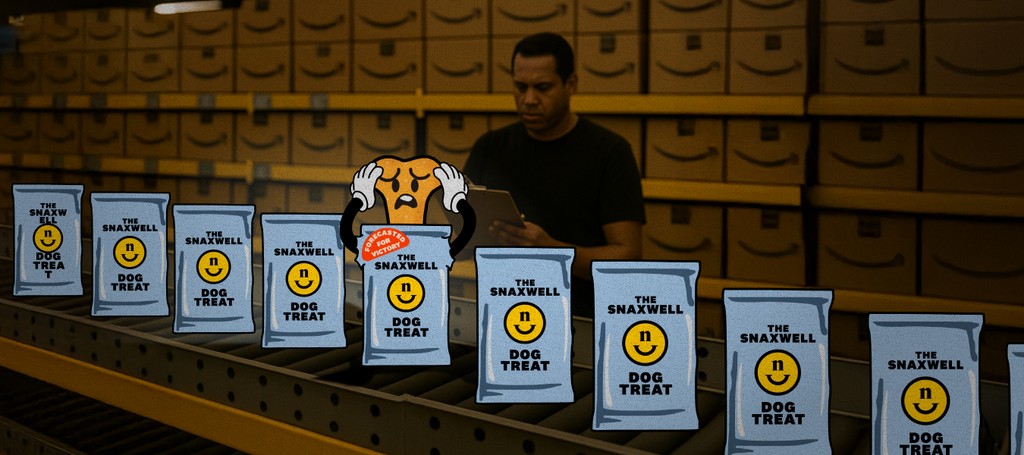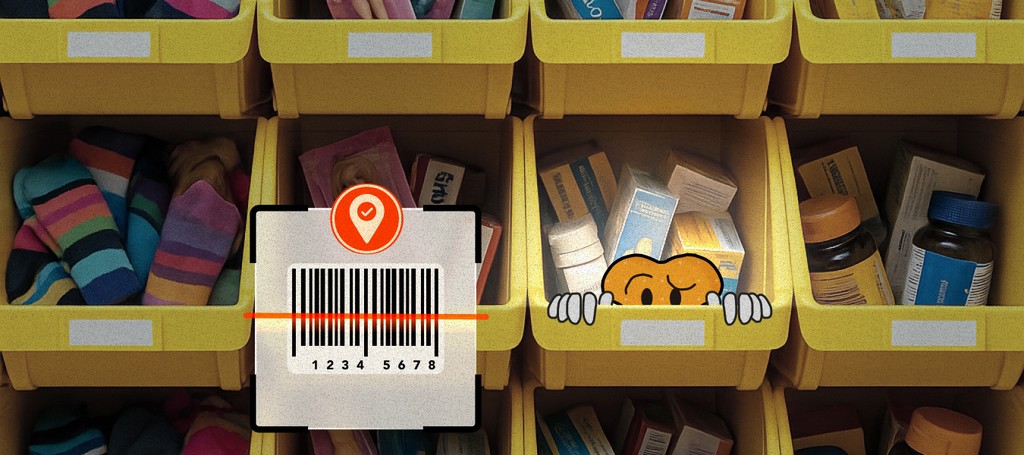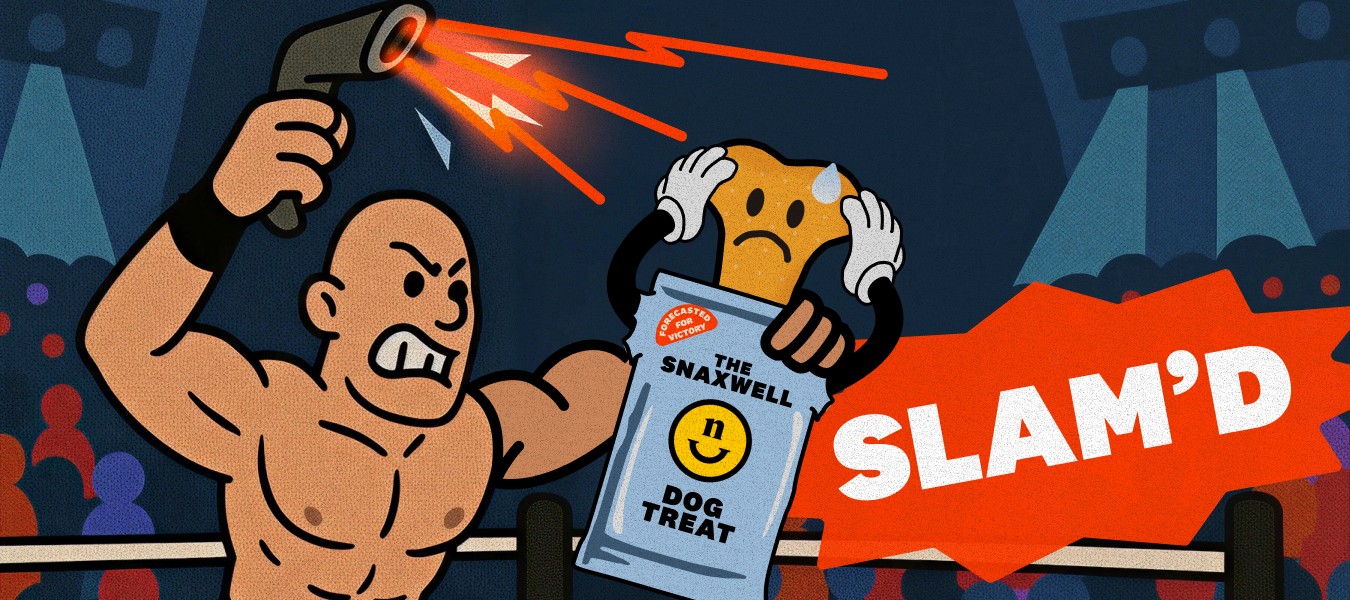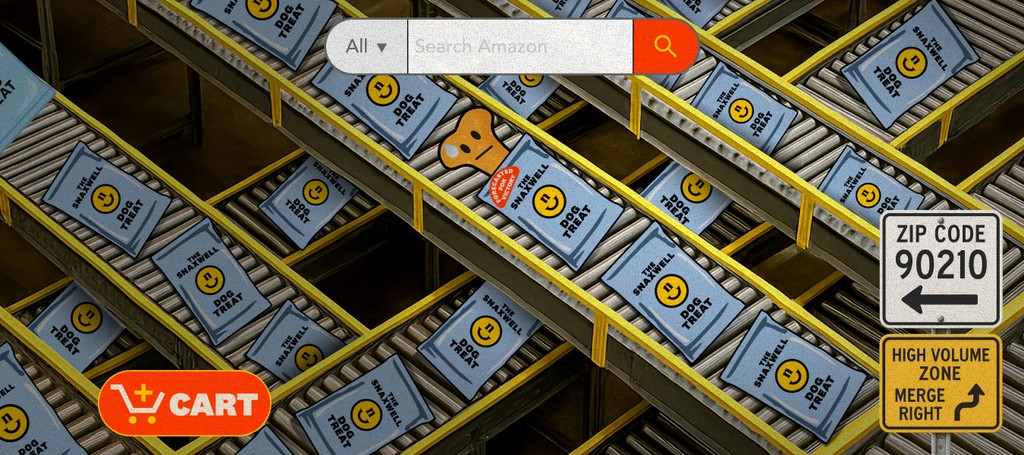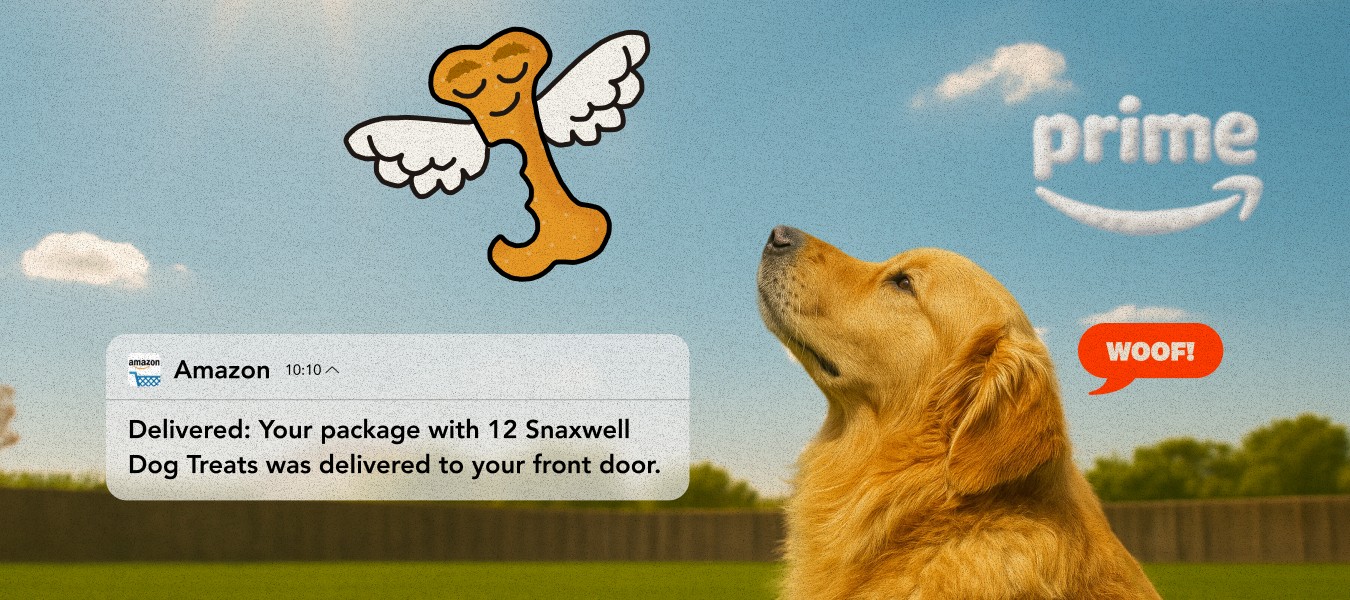Author
8 Minute Read
TLDR;
From factory to front porch, take a wild ride through Amazon's fulfillment system with Snaxwell, a chewable chicken-flavored dog treat. This playful breakdown explains cross-docking, random stow, AI-powered robots, sortation centers, and last-mile delivery with humor, heart, and some seriously impressive logistics facts.
Hi. 👋 I'm Snackwell, a dog treat.
Or at least I was. By the time you read this, I'll probably be gone—devoured, crunched, and transformed into pure golden retriever joy. And honestly? That's the dream.
But here's the thing: I didn't just magically appear on that porch. I survived a journey through one of the most sophisticated logistics networks on the planet. A system that processes 1.6 million packages daily across a network of over 1,200 facilities worldwide, powered by more than 1 million robots that would make Wall-E jealous.
Let me walk you through it—one snack-sized step at a time.
(I don't have feet, but you get the idea.)
Step 1: Inbound at the Cross-Dock
I was born in an Ohio treat factory—rawhide-free, bacon-adjacent, and sealed tight for maximum drool effect. After getting boxed up with my treat‑pack crew, we hit the road for Chicago. Forty‑eight hours, three states, and one very questionable truck stop later, we rolled into one of Amazon’s massive cross‑dock facilities. By then, we weren’t just snacks. We were trauma-bonded.
Here’s the thing about cross‑docking: you don’t stick around. Packages like me get unloaded from one truck and almost instantly reloaded onto another—no storage, just logistical speed dating. Amazon’s newer inbound sites are huge—some top 1 million square feet—while traditional receive centers are about 600,000 square feet.
And it’s not random. Amazon’s AI forecasting guides where inventory goes, forecasting demand for a few hundred million items a day so the right stuff lands in the right region at the right time. My fate? Straight to Illinois—apparently prime chicken‑chew territory.
The crazy part? Cross‑dock turnarounds often happen within hours, so while algorithms mapped my destiny, I was mostly trying not to get flattened by a mountain of cat toys.
📦 Want the logistics minus the chewiness?
Check out our deep dive into Amazon’s delivery system —> a more buttoned‑up breakdown of every fulfillment step (no slobber included).
Step 2: Stowed at the Fulfillment Center
Next stop: Amazon’s huge fulfillment center in Joliet, Illinois, towering at over 3 million square feet. It’s temperature-controlled and smells like a mix of cardboard and stale coffee.
Here’s where my journey really got interesting. Instead of cozying up with other dog treats, I got randomly stowed, aka chaotic storage. Sounds bizarre, but it’s actually an efficiency hack.
Why random stow is brilliant:
Less congestion. By scattering inventory across the warehouse, Amazon eliminates picker traffic jams and keeps the aisles flowing. Instead of Black Friday chaos, it feels more like a perfectly choreographed shopping spree where no one bumps carts.
Robots thrive. Every item gets scanned on arrival, letting Amazon’s 1 million+ robots (yes, you read that right) locate everything instantly. These bots are guided by AI traffic controllers like DeepFleet.
More storage, smarter use. Random placement enables twice the density compared to fixed-slot methods—a strategy Amazon perfected over years.
So there I was, snuggled between a USB cable and a suspicious-looking cat toy, logged into the system and waiting for someone to hit “Buy Now.” The bots were on standby to grab me faster than a golden retriever after a dropped tennis ball.
Step 3: Scanned and SLAM'd
The moment finally came. Someone clicked. The system pinged. A robot rolled up.
Meet Vulcan. Amazon's newest warehouse bot with actual tactile sensors and AI that makes it freakishly good at picking, packing, and not crushing delicate items like, well, me. This robot has a "sense of touch" through force-feedback sensors and can handle about 75% of Amazon's inventory. It's like having robot hands that know exactly how much pressure to apply—firm enough to grab me securely, gentle enough that I didn't become dog treat dust.
Vulcan fed me into the SLAM line: Scan, Label, Apply, Manifest.
Here's what SLAM does at breakneck speed:
Scan: Confirm barcodes and product IDs with six-sided scanners that capture everything from every angle
Label: Prints shipping info with AI-optimized placement for irregular packages
Apply: Robotic arms apply labels via air blasts with surgical precision
Manifest: Logs the package and confirms readiness with carriers, not tarot cards.
The advanced systems can handle 15-80+ cases per minute, with the highest-end setups processing up to 1,000 cartons per hour. I felt like a little snack VIP being processed by the most sophisticated packaging system on Earth.
Honestly? I felt cared for. Like a tiny treat king being honored before the big sendoff.
Step 4: Sorted and Shipped
My journey continued at the sortation center in Wood Dale, Illinois
Imagine a hamster maze on steroids, except instead of wood shavings and water bottles, it’s powered by AI, roaring conveyor belts, and enough packages to fill half a million porches a day. This is where raw speed turns into precise orchestration, and where my chewy destiny gets locked in.
Why sortation feels like controlled chaos:
Blazing conveyors. Packages race on high-speed belts that keep the flow constant.
Cross-belt sorters. These systems move up to 27,000 items/hour, with precise diverts for mixed parcels.
AI grouping. Amazon’s CONDOR algorithm was rolled out nationwide in 2024, cutting routing resources by 0.5%—a small number that saves millions of miles annually.
Barcode mastery. Vision Assisted Sort Stations scan items from every angle, guiding workers to direct packages with precision.
Mega scale. The largest sortation hubs process 500,000 packages per day across 240+ destinations. A small center’s daily work gets done here in a single hour.
Step 5: The Last Mile
At dawn, I rolled into a local Amazon delivery station—my final pit stop before achieving greatness (or getting absolutely demolished by a golden retriever named Bingo).
Here, the operation shifts into overdrive. I get one last scan to confirm I’m in the right place. Then AI-driven routing kicks in, sequencing deliveries based on traffic, location, and density so every driver runs a flawless route.
Packages like me aren’t piled up randomly. We’re staged in delivery order, so drivers can grab and go without losing a second. And yes—that little photo you see in your Amazon app? That was my first and only selfie.
Amazon is also layering in new tech. Vision-Assisted Package Retrieval projects visual cues inside vans so drivers instantly spot the right package. And its growing fleet of Rivian electric vans is setting new standards for speed and sustainability, already powering billions of doorstep moments.
Step 6: The Cost of Convenience
By the time I hit the delivery station, the finish line was finally in sight. But here’s the twist: the shortest stretch of my journey is also the most expensive.
Why last mile strains the system:
It accounts for 53% of total shipping costs, up from 41% in 2018, making it the single priciest leg of fulfillment.
Amazon’s average cost per package ranges from about $10.10 in dense cities to $50 in rural areas.
Failed deliveries pile on even more, averaging $17.78 each, with about 5% of attempts requiring multiple tries.
And yet, Amazon has turned this cost sink into a competitive edge. In 2024 alone, the company delivered 9 billion items same- or next-day globally—a 30% year-over-year increase. In the top 60 U.S. metros, 60% of Prime orders now land the very next day.
Scale matters, too. The Delivery Service Partner program has expanded to 4,400+ partners and 390,000+ drivers, handling more than 10 million packages daily.
👉 Why it matters for CPG brands: Last-mile costs can eat your margins alive if unmanaged. Amazon absorbs the pain through scale and tech, but most brands can’t. Partnering with experts who understand this tradeoff means your product shows up on time and profitably.
related articles
Amazon
Fulfillment
Humor




